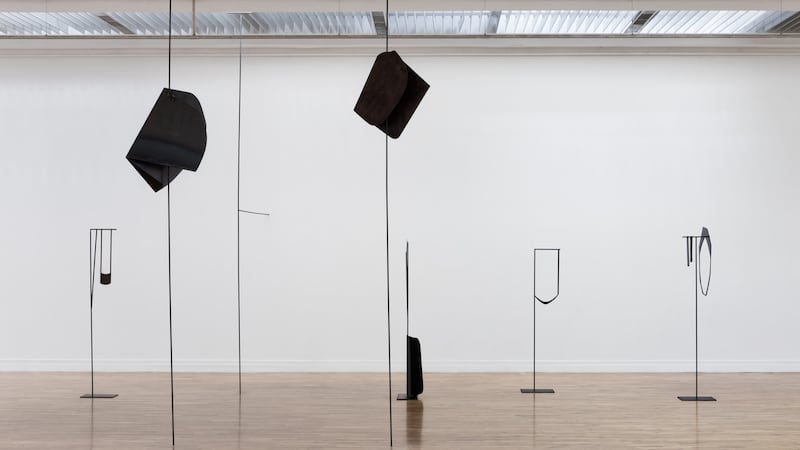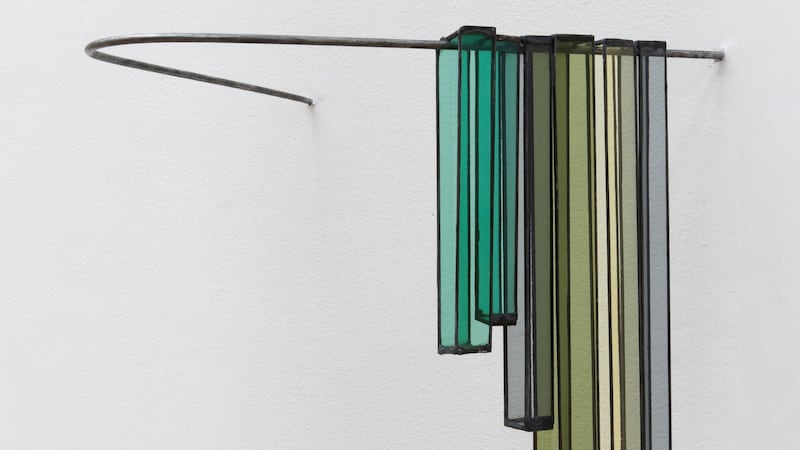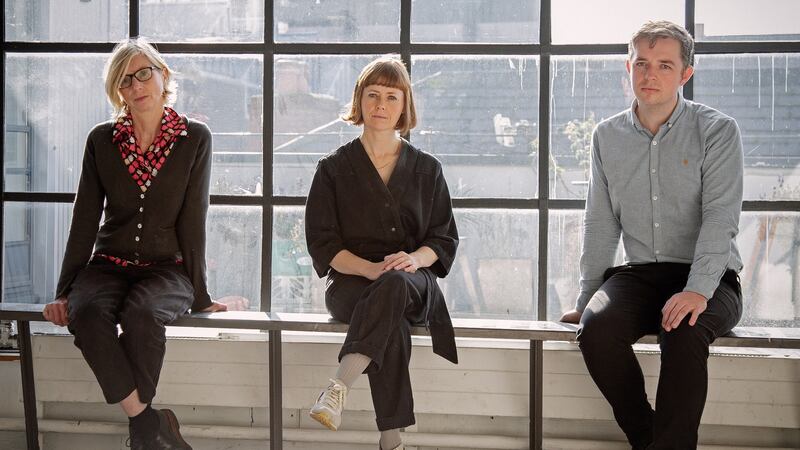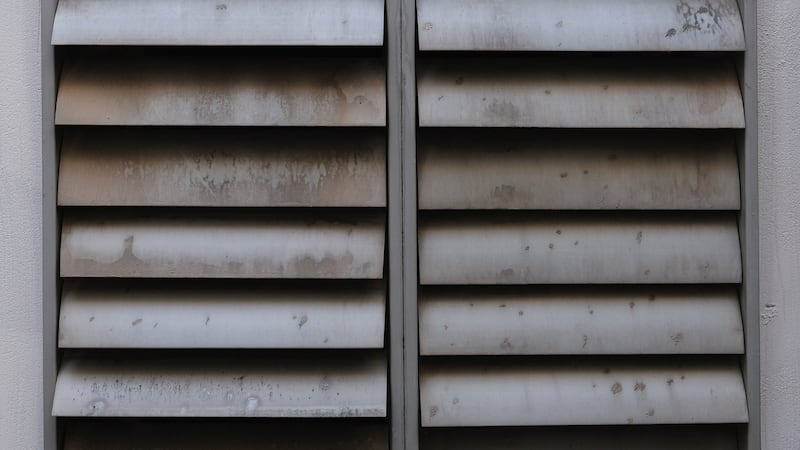Spending so much time at home over the past two years, many of us became aware of our immediate worlds in ways that would be familiar to artists and philosophers. Without the distractions of nights out, holidays, or even the daily commute to work, we had the space to really notice the things that surround us.
Given time and focused thought, shadows on walls, the dusk of corners, the elegant lines of a shelf, the way the wind plays on grasses and leaves can all draw us into ways of understanding, and feeling more richly the experience of being in the world.
Gaston Bachelard wrote a whole book about it. His Poetics of Space was first published in English in the 1960s, and is still rediscovered excitedly, year on year, by art students getting to grips with the practice of seeing deeply. Bachelard gets right in to everything, from nests to chests of drawers, attics to cellars. Irish artist Niamh O'Malley does something similar, but instead of words, she uses glass, metal, wood, film and photography. Later this month, she will be representing Ireland at the Venice Biennale, the seven-month long event that is often described as the Olympics of the art world.
Those who have never been to the Venice Biennale may wonder what all the fuss is about, but with 80 countries staging exhibitions, and a flock of curators, critics and prestigious museum directors in attendance, selection can be career defining. It is also a chance for art lovers to wander through the extraordinary and frequently bizarre Giardini, a Napoleonic pleasure garden, in which various countries have built national pavilions, reflecting what they evidently thought made them look good at the time. Thus, while the Nordic pavilion is still elegantly Scandi, with trees growing up through the roof; the home of the US appears a little tired and colonial these days.
This year, the Russian pavilion will lie empty; the artists and curator, Kirill Savchenkov, Alexandra Sukhareva and Raimundas Malasauskas, having resigned in response to the invasion of Ukraine. Pavlo Makov will represent Ukraine, with a work entitled The Fountain of Exhaustion, to be installed, like O'Malley's Gather, in the Arsenale, the network of former shipyards and armouries, some of which date back to the 12th century.

When I meet O'Malley, on a sunny morning at the Temple Bar Gallery, the Russian invasion hasn't yet begun. Elements of Gather have just been crated up for transport to Venice, and O'Malley's studio seems to be awash with the delicate lush greens of a spring garden. This is odd, because we are actually surrounded by a range of typical and most un-garden like studio detritus. There are shelves of books, samples of timber, glass and metal, reference photos and drawings, computers, cabling, a portable heater (no studio is complete without one) and the inevitable kettle and coffee making gear.
But there’s also something about the way the light hits the various plants O’Malley has in pots along the generous windows that seems to amplify the greens of some sketches, and is reflected in panels of different coloured glass propped up against a wall. After a while, I realise the source of the feeling isn’t the pot plants, or the colours of various emerald elements, but a film, playing on a loop on a small vertical LED screen, leaning against the wide window sill. Hooded Crow follows a large black bird dipping its beak into a small garden pond. It is gently mesmerising. The wild bird is absorbed in its activity, nodding to the water, as if in prayer. But there is something about the outline of the stones around the pond that let you know this is a domestic space – so there’s a tasty sense of the alien and displaced about it all.

The pond is in O’Malley’s back garden. It was one of those lockdown projects, undertaken by the artist and her family, to give a focus to those drifting days when you were lucky if you could maintain a sense of purpose, even if your core purpose – keeping your loved ones well and happy (or at least semi sane) – was already tough enough.
“We have a very tiny inner city garden,” O’Malley says. “And I decided to dig a hole. Remember we had that lovely weather? So we dug this hole, and made a pond, and then a kind of beautiful thing happened, as loads of birds came. I’d sit there drawing them with my son. Then I filmed them, and it ended up having a real impact on the pitch for Venice, and everything that came out of that.”
Born in Mayo, O’Malley recalls the locked-in presence of those days. “Everyone felt it, but being in the city in particular, when we ended up not being able to travel at all… It was hard.”
She describes the process of digging, and how more material seems to come out of the hole than should actually have fitted in there; and unearthing stones and broken pottery, and laying them out with her son, giving them a sense of order. “It made me think about how we make spaces, what’s useful, and what you do when you can’t do anything… You dig a hole, and as you dig a hole you make a mountain,” she laughs.
“You’re always doing something,” she continues. “Aren’t you? And then you question the logic of what you’re doing: whether it’s work, or whether it’s just time being spent. And you look at where your attention is being drawn. I think that’s very similar to making shows. You’re asking: what am I doing? I’m making space.”

As we talk, I wonder if the things this kind of deep attention draws out act on us, even if we are unaware of them. In other words, does O’Malley’s art and Bachelard’s writing enrich our lives by adding to our sense of the world? Or does it simply draw attention to things that we know are there, but haven’t yet realised as fully formed thoughts? Is it noticing, or creating?
“It’s probably a bit of both,” says O’Malley, after a pause. “I mean, there’s stuff that came from walking the city, which definitely influenced the show, but I wasn’t walking the city to find a show. You can’t ignore the gestation of an exhibition, but that doesn’t mean it can’t speak outside of that.”
She shows me another video work, Vent, which is one of those art works that initially seems slight, but yet from which you can’t quite tear your eyes – or your mind. A square ventilation vent, a little gritty, and very grey, its louvers activate, then calm either through gusts of wind, or the turning on of an unseen power source. There’s a lovely aliveness to it, and it strikes me as a gateway into an epic delight in the small, the mundane, the otherwise ignored.

It is also a gateway into some of O'Malley's perhaps more obscure works. Obscure art, or rather art that doesn't wear its meaning on is sleeve, sometimes gets a bad rep. We don't seem to mind so much when literature gets elliptical. Think of how revered James Joyce is. Then there is the elusive text Eimear McBride has written to accompany O'Malley's exhibition, hinting at further suggestions of new ways of seeing and thinking. As we get further in to Gather – steel, wood and glass works have names including Shelter, Holds, Covers, Double Canopy – we see everyday things made strange by O'Malley's eye.
Look closer though, and you see that the strangeness is actually a reduction to essence. Holds is a beech and steel selection of supports, sculpted into a satisfying tall form that holds its weight lightly, while reaching up to, and through the roof. Shelter is just that – a steel and glass curved canopy, small green glass flecks mimicking leaves.
Exhibiting successfully at the Venice Biennale is partly down to the necessary skill and vision of the artist and curators, but also comes down to a great deal of luck. You reach the Irish pavilion (it is actually a room, one of a series of spaces) after navigating the huge main exhibition in the Arsenale, and following on from a number of other national pavilions. As such, you have no advance knowledge of what will come before you. A quieter, thoughtful show can be perfectly pitched if the visitor has just come through a more cacophonous presentation, or it can fade. Even the most wonderful art can be contingent on the mood music of what is around it.
"I like difficult spaces, actually," says O'Malley. "Because they force you to tackle them, and that has an impact on the work." She cites her exhibitions at the Royal Hibernian Academy in 2019, and at the Douglas Hyde in 2017 – another notoriously tricky space because of its scale and proportions: "I loved that. Everything sang…" In Venice, visitors will have just come through the Oman pavilion. "It's a big group show with two sound works, that's all we know," she laughs. "But you don't then want to make something bombastic, as if shouting louder will make you be heard. Well, I don't."
As she muses on the idea of carving out space and shelter, about how arranging objects on a shelf can be akin to painting, and about creating artworks that exude both strangeness and familiarity, I start to re-examine the everyday objects around me through new eyes, and feel the better for it. “It is a strange moment,” O’Malley concludes. “It really is, but being in a room with art is as much as we can offer in a way. And that’s a lot, actually.”
Niamh O'Malley, Gather, is curated by Clíodhna Shaffrey and Michael Hill of the Temple Bar Gallery + Studios. The Venice Biennale runs from April 23rd to November 27th, labiennale.org, irelandatvenice2022.ie. Following its presentation at Venice, Gather will tour to The Model, Sligo; Temple Bar Gallery, Dublin and Golden Thread Gallery, Belfast.



















